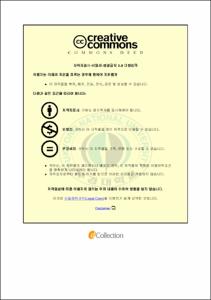근대 이후 도시계획 변화과정에서 나타난 공간 형태적 특성에 관한 연구
- Abstract
- Process created humanity in space such as "City" is history disbanded community as a livelihood and history desired constantly to be performing and looking for lost community. In other words, Desire and Effort for the Community in dialectic of history appeared consistently, and Community suggested main elements performed spaces in process of city planning. Thus this study is to analyze characteristics of spatial form in the Western city planning such as planning concept, architectural characteristics, arrangement of form and Heterotopia space proposed by ranging from Robert Owen, Charles Fourier to Hugh Barton in modern times since the Industrial Revolution.
Analysis results were summed up as follows:
First, many city planning in the West proposed to solving the social problem physically, and based on contemporary society cultural background in paradigm of the Western urban history. So they proposed city planning with social structure of ideal and reality, better future while criticizing and going through dialectical process looking for alternative to the new direction because to solve the problem of city in times situation.
Second, arrangement of experimental city in west variously presented from inner composition of dual boundary to spatial arrangement based on zoning, street-spaces arrangement for constructing territoriality, etc. but they composed self-reliant city through arrangement of unit building on urban space. and they expressed ideal by city, and proposed variously planning concept such as communal space, central green system to improve Urban physical environment.
Third, community from historical flow constructed into various relations, such as building and building, street and building, green space in urban area and also scale was many changed smaller and bigger. but finally community in city planning was handled consistently from modern era, and constructed space of urban level with various form.
- Issued Date
- 2015
- Awarded Date
- 2015. 2
- Type
- Dissertation
- Publisher
- 부경대학교 대학원
- Alternative Author(s)
- Park, Yong Kuk
- Affiliation
- 부경대학교 대학원
- Department
- 대학원 건축학과
- Advisor
- 송대호
- Table Of Contents
- Abstract
1. 서 론 1
1.1 연구의 배경 및 목적 1
1.2 연구의 범위 및 방법 3
1.3 분석의 접근 틀 7
1.3.1 선행연구 검토 7
1.3.2 분석을 위한 구성요소 설정 11
2. 이론적 배경 13
2.1 서구 도시사회의 패러다임 13
2.2 이상적 사회와 헤테로토피아 24
2.2.1 고전적 의미의 유토피아와 이상도시 24
2.2.2 유토피아에서 헤테로토피아로의 전환 28
2.3 사회조직적 차원의 공동체 의식 변화 30
2.3.1 고전적 의미에서의 공동체 개념 30
2.3.2 근대 이후 도시의 질적 향상을 위한 공동체 운동 33
3. 계획 개념 및 건축적 특성 분석 37
3.1 계획 개념적 특성 37
3.2 건축적 특성 53
3.3 배치 형태 및 가로체계 68
4. 커뮤니티 공간의 변화 특성 분석 82
4.1 커뮤니티 관점의 변화 분석 82
4.1.1 물리적 환경 개선을 위한 공상적 주거지 개념 82
4.1.2 개체의 교류와 환경을 고려한 실증적 주거지 개념 85
4.2 도시 공간 내 커뮤니티 관계 분석 88
4.2.1 작업과 생산을 위한 중앙 집중적 커뮤니티 88
4.2.2 사회적 교류의 다원적 커뮤니티 92
4.3 종합 고찰 95
5. 결 론 98
참고문헌 100
- Degree
- Master
- Files in This Item:
-
-
Download
 근대 이후 도시계획 변화과정에서 나타난 공간 형태적 특성에 관한 연구.pdf
기타 데이터 / 18.89 MB / Adobe PDF
근대 이후 도시계획 변화과정에서 나타난 공간 형태적 특성에 관한 연구.pdf
기타 데이터 / 18.89 MB / Adobe PDF
-
Items in Repository are protected by copyright, with all rights reserved, unless otherwise indicated.